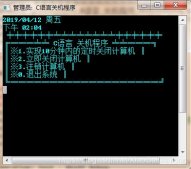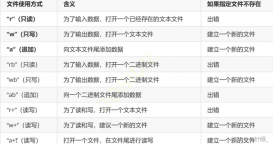首先来分别看一下,指针数组的一个小例子:
|
1
2
3
4
5
6
7
8
9
10
11
12
13
14
15
16
17
18
19
20
21
22
23
24
25
26
27
28
29
30
31
32
33
34
35
36
37
38
39
|
#include <stdio.h> #include <string.h> int lookup_keyword(const char*key, const char* table[], const int size) { int ret = -1; int i = 0; for(i=0; i<size; i++) { if (strcmp(key, table[i]) == 0) { ret = i; break; } } return ret; } #define DIM(array) (sizeof(array)/sizeof(*array)) int main() { const char* keyword[] = { "do", "for", "if", "register", "switch", "while", "case", "static", }; printf("%d\n", lookup_keyword("static", keyword, DIM(keyword))); return 0; } |
数组指针:
|
1
2
3
4
5
6
7
8
9
10
11
12
13
14
15
16
17
18
|
#include <stdio.h> int main() { int i; int* pI = &i; //普通类型 typedef int(AINT5)[5]; AINT5* p1; int array[5]; p1 = &array; //数组指针1 int (*p2)[5] = &array; //数组指针2(不建议这样写) int (*p3)[4] = &array; // X 数组指针3(不建议这样写) return 0; } |
这两个名字不同当然所代表的意思也就不同。我刚开始看到这就吓到了,主要是中文太博大精深了,整这样的简称太专业了,把人都绕晕了。从英文解释或中文全称看就比较容易理解。
指针数组:array of pointers,即用于存储指针的数组,也就是数组元素都是指针
数组指针:a pointer to an array,即指向数组的指针
还要注意的是他们用法的区别,下面举例说明。
int* a[4] 指针数组
表示:数组a中的元素都为int型指针
元素表示:*a[i] *(a[i])是一样的,因为[]优先级高于*
int (*a)[4] 数组指针
表示:指向数组a的指针
元素表示:(*a)[i]
注意:在实际应用中,对于指针数组,我们经常这样使用:
|
1
2
|
typedef int* pInt;pInt a[4]; |
这跟上面指针数组定义所表达的意思是一样的,只不过采取了类型变换。
代码演示如下:
|
1
2
3
4
5
6
7
8
9
10
11
12
13
14
15
16
17
18
19
20
|
#include <iostream> using namespace std; int main(){int c[4]={1,2,3,4};int *a[4]; //指针数组int (*b)[4]; //数组指针b=&c;//将数组c中元素赋给数组afor(int i=0;i<4;i++){a[i]=&c[i];}//输出看下结果cout<<*a[1]<<endl; //输出2就对cout<<(*b)[2]<<endl; //输出3就对return 0;} |
注意:定义了数组指针,该指针指向这个数组的首地址,必须给指针指定一个地址,容易犯的错得就是,不给b地址,直接用(*b)[i]=c[i]给数组b中元素赋值,这时数组指针不知道指向哪里,调试时可能没错,但运行时肯定出现问题,使用指针时要注意这个问题。但为什么a就不用给他地址呢,a的元素是指针,实际上for循环内已经给数组a中元素指定地址了。但若在for循环内写*a[i]=c[i],这同样会出问题。总之一句话,定义了指针一定要知道指针指向哪里,不然要悲剧。
















